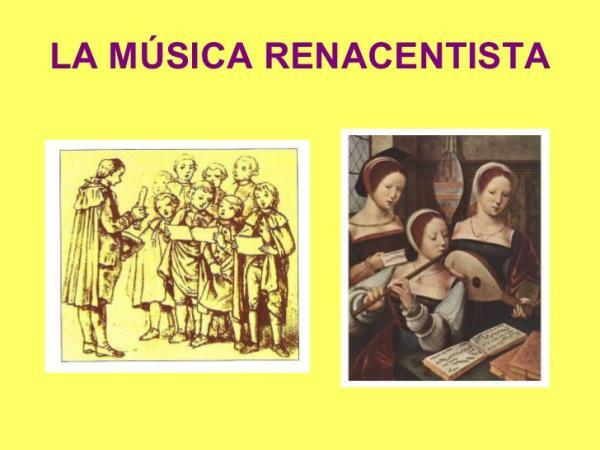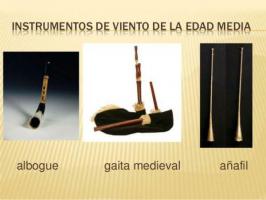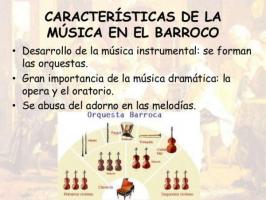RENAISSANCE MUSIC: history and characteristics

Image: Slideshare
Art is an expression of the human being and therefore it is not surprising that together with the discoveries, the way of life and the change of ideas through the years, the creators express as a reflection all these movements of ideas and feelings. As history is being written, thousands of works and forms of art are left to tell us how the people of each era lived and felt, here is the great value of art as a human heritage.
Another important factor is the awareness of the human being towards his own value, since it is a crucial characteristic for the motivation to make art. Precisely in this article we will talk about a time when people consider their place in the world through music. In this lesson from a TEACHER we will talk about Renaissance music: history and characteristics.
Within the music stages we should talk about the Renaissance that has to Italy as the center of birth, approximately in the year 1400. Over time the current came to spread throughout Europe, lasting between the 15th and 16th centuries. The period ends with the century, approximately in the year 1600.
The Renaissance was a decisive stage for music and art in general, since it arises from the humanism, the mentality of giving importance to the human being himself and to his intellectual capacity. At this time the study, the discovery of the world and the creation were the most appreciated virtues.
Not surprisingly, a consequence of the intellectual boom, the music will take more complexity during this time. Despite the rise of the person as being, religion is still a factor of great importance and was for many the main motive and inspiration to create musical works.
Finally, another couple of important factors were the rise of the bourgeoisie as a social class and the invention of the printing press, which promoted the spread of music.
It is in the Renaissance that music begins to take on more complexity as techniques such as the polyphony and a broader study of counterpoint. In other words, it is at this time that more melodic lines begin to be involved in music to create more combinations and games with the music. sound from the independence of voices, tensions and resolutions in relation to their intervals (the distance between a musical note and other).
Another characteristic factor is that the music was kept within the modal system, that is to say that usually the works took the musical scale as the harmonic base for the composition. Finally, Renaissance music generally used the figure of the round as a unit of musical pulse.
Among the outstanding composers of the musical renaissance we can mention Josquin des Prés, Guillaume Dufay, Giovanni Pierluigi da Palestrina, Orlando di LassoY Tomás Luis de Victoria.

Image: Slideshare
As we have mentioned above, Renaissance music still maintains religion as one of the main motives for writing works. Broadly speaking, we can say that the main Renaissance musical forms They were the mass and the motet, both created for liturgical purposes.
- The mass could be composed for both voice a cappella (without instrumentation) as for singing accompanied with instrumentation. The texts were in Latin. Thanks to the polyphony, the voices sang different melodic lines according to their tessitura. The Canyon, where the melodic motif is repeated and moved by measure. Depending on the treatise on voices, in the mass there were variations of mass motto, mass cantus firmus, mass paraphrase and mass parody.
- The motet takes inspiration from biblical scriptures (also in Latin). Unlike other forms, in the motet the compositions were mostly original. Although it has its origin in medieval times, it is in the Renaissance that it reaches a greater complexity, combining even up to 12 voices.
Other forms of Renaissance music
- Religious carol
- Spiritual madrigal
- Lauda
- Lutheran Choir
- Profane music (works outside the religious context, including the chanson, the romance la villanella, the frottola and the madrigal).
- Instrumental Music (such as ricercare, fantasy and canzona).
- Forms for dance (alemanda, la bajadanza, la gallarda and la pavana).
- Forms of improvisation (the toccata, the prelude, the recercada, the romanesca and the passamezzo).
Thanks to this information you already have an idea of the renaissance and the importance it has as a time for the evolution of music. Each part of the story is capable of providing us with clues and answers to the reasons for being today.




